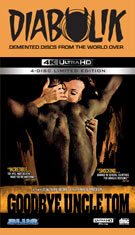

Color, 1971, 123 mins. 8 secs. / 135 mins. 39 secs.
Directed by Gualtiero Jacopetti and Franco Prosperi
Blue Underground (UHD, Blu-ray & DVD) (US R0 4K/HD/NTSC) / WS (2.35:1) (16:9)
After bringing the mondo movie to mainstream 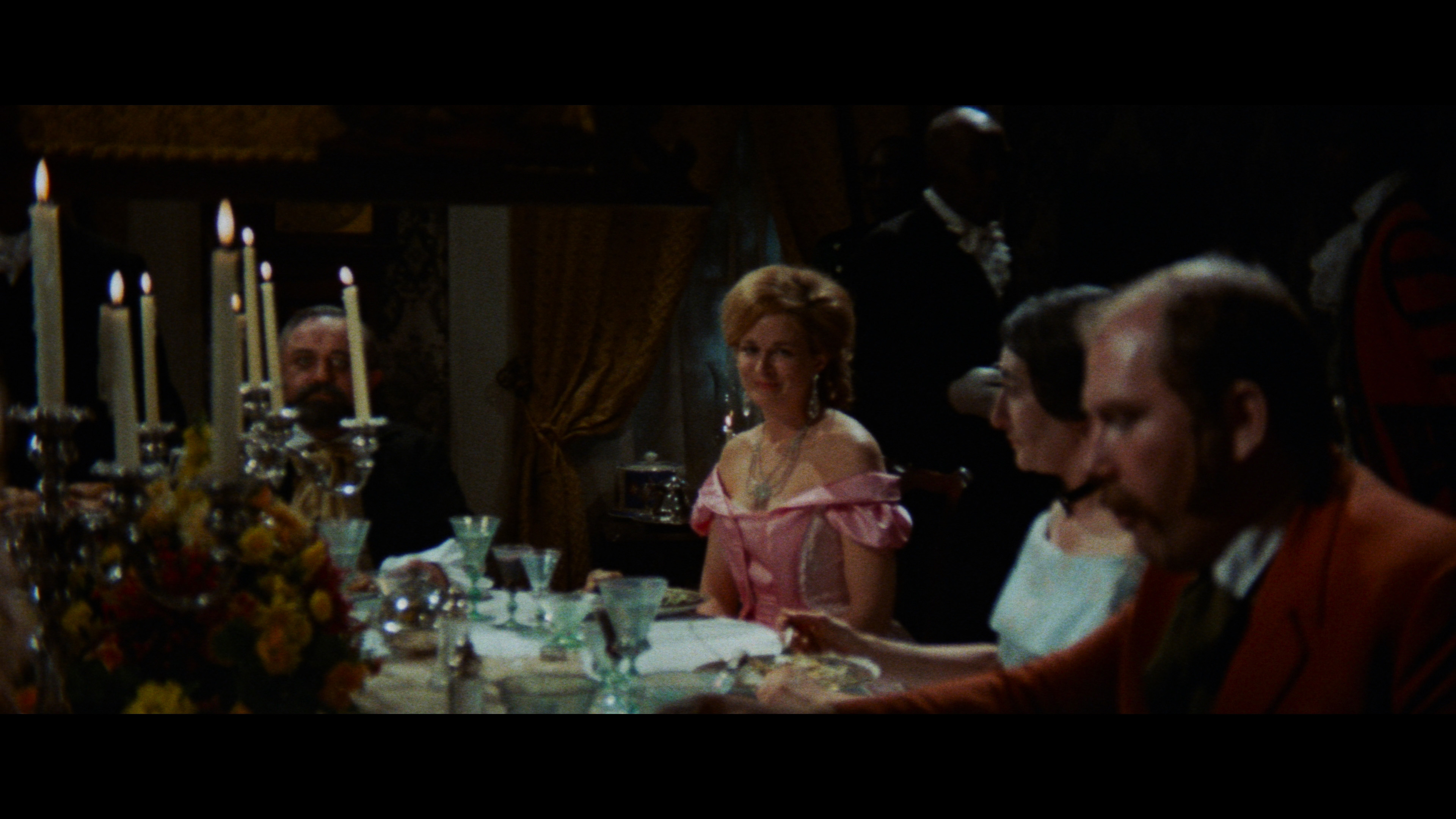 prominence with their 1962 smash hit Mondo Cane and its Oscar-nominated theme song, filmmakers Gualtiero Jacopetti and Franco
prominence with their 1962 smash hit Mondo Cane and its Oscar-nominated theme song, filmmakers Gualtiero Jacopetti and Franco  Prosperi (and original collaborator Paolo Cavara) weathered a storm of controversy and critical attacks as they continued to push the format into riskier territory including the shocking Africa: Blood and Guts in 1966. However, the capper of their career -- at least in terms of both outrage and ambition -- came in 1971 with Goodbye Uncle Tom (Addio Zio Tom), a "documentary" shot in Haiti featuring hundreds of extras in harrowing reenactments of the brutal treatment of slaves on their way to and within the American South. The directors immediately claimed the film was made from an anti-racist perspective, something that was muddled when it was reworked considerably for its multiple English-language variants with almost all of the relevant political subtext and social commentary stripped away. The film's English-language run in the U.S. supposedly caused violent reactions among grindhouse audiences, and mainstream reviewers were quick to attack it as an affront to good taste and an incitement to race wars. Since then the film has taken its place among the most extreme offerings of Italian cinema along with titles like Cannibal Holocaust and Salò, or the 120 Days of Sodom, though its jaw-dropping epic visuals and outrageous racial politics make it unlike anything else out there. For better or worse.
Prosperi (and original collaborator Paolo Cavara) weathered a storm of controversy and critical attacks as they continued to push the format into riskier territory including the shocking Africa: Blood and Guts in 1966. However, the capper of their career -- at least in terms of both outrage and ambition -- came in 1971 with Goodbye Uncle Tom (Addio Zio Tom), a "documentary" shot in Haiti featuring hundreds of extras in harrowing reenactments of the brutal treatment of slaves on their way to and within the American South. The directors immediately claimed the film was made from an anti-racist perspective, something that was muddled when it was reworked considerably for its multiple English-language variants with almost all of the relevant political subtext and social commentary stripped away. The film's English-language run in the U.S. supposedly caused violent reactions among grindhouse audiences, and mainstream reviewers were quick to attack it as an affront to good taste and an incitement to race wars. Since then the film has taken its place among the most extreme offerings of Italian cinema along with titles like Cannibal Holocaust and Salò, or the 120 Days of Sodom, though its jaw-dropping epic visuals and outrageous racial politics make it unlike anything else out there. For better or worse.
No matter how you see it, the gist of the film is the same with Jacopetti and Prosperi (or at least their POV camera) traveling back via helicopter to the days of the Antebellum South, where white plantation owners, their families, and their slaves coexist very uneasily as we're brought in to observe a social gathering in progress including Uncle Tom's Cabin Harriet Beecher Stowe. 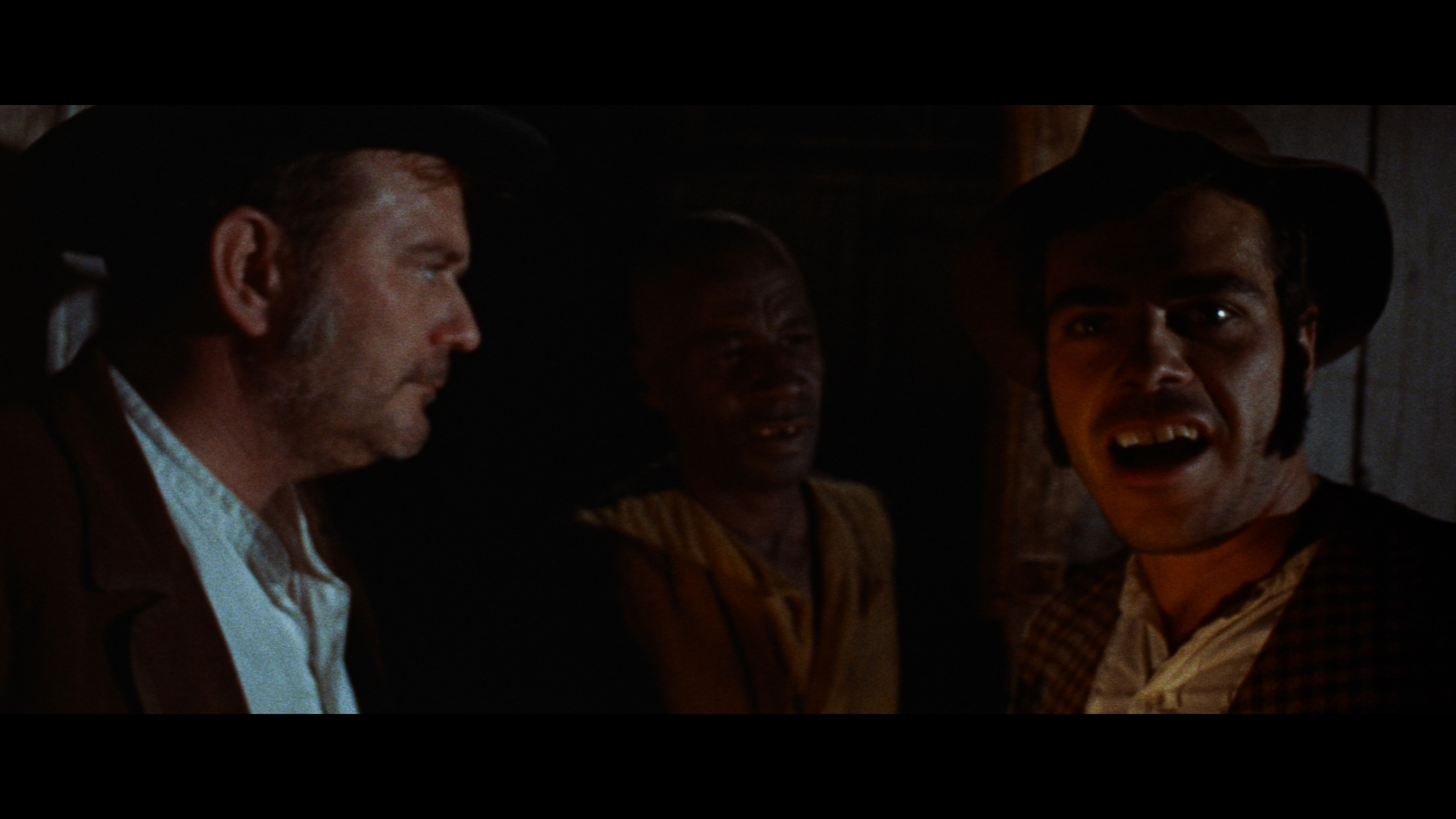 There's nothing resembling character development here as the film quickly turns into a dizzying account of the brutal daily machinations of the slave trade, showing the brutal conditions on ships with men forcibly brought to America in shackles, the degrading medical inspection process, the appraisals of newborn babies, and other harrowing depictions pulled from historical accounts, all portrayed on a massive, mind-boggling scale. In the final stretch we're thrust into modern-day Miami, where a modernized violent fantasia based on The
There's nothing resembling character development here as the film quickly turns into a dizzying account of the brutal daily machinations of the slave trade, showing the brutal conditions on ships with men forcibly brought to America in shackles, the degrading medical inspection process, the appraisals of newborn babies, and other harrowing depictions pulled from historical accounts, all portrayed on a massive, mind-boggling scale. In the final stretch we're thrust into modern-day Miami, where a modernized violent fantasia based on The 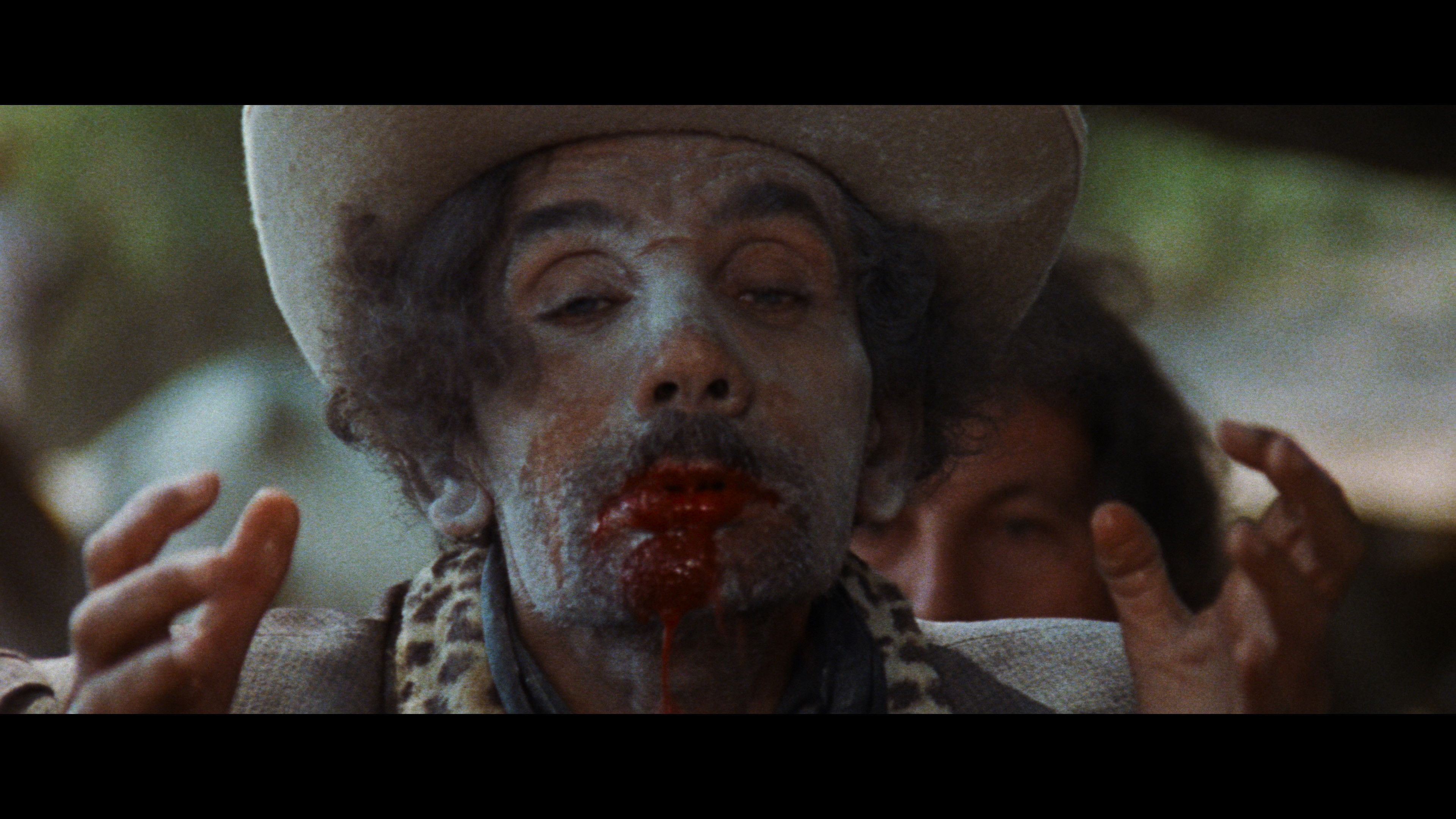 Confessions of Nat Turner plays out to demonstrate that the Civil War was hardly an end to an ongoing bloodstained legacy.
Confessions of Nat Turner plays out to demonstrate that the Civil War was hardly an end to an ongoing bloodstained legacy.
At least in the English version, the audience is thrown into the time travel angle right away and given zero context for the climactic shift; instead it's a relentless depiction of atrocities that can test the strength of even the most steel-nerved viewers out there. The Italian director's cut is radically different, including a nearly 20-minute opening act covering the then-fresh trauma in the wake of the assassination of Dr. Martin Luther King Jr. and presented a very sardonic visit with a modern Southern matriarch whose attitudes are directly descended from her ancestors. The rest of the film unfolds the same in its broad strokes, but some of the more extreme footage is a bit more discreet here versus the more shocking outtakes inserted for international audiences. From a technical standpoint, the film remains astonishing with its borderline Andrzej Zulawski-esque swooping camera and wide-angle shots of hordes of extras at a time. Exactly how those Haitian residents were recruited doesn't exactly make you feel comfortable about watching the film, a sensation that will be familiar to anyone who wades around in the murkier waters of Italian exploitation cinema. One aspect that's indisputably admirable is its haunting score by composer Riz Ortolani, who had been working with the team since Mondo Cane and whose theme song here, "Oh My Love" (sung by his wife, Katyna Ranieri), was prominently used in Nicolas Winding Refn's Drive in 2011. The lyrical counterpoint gambit is always a risky one in films like this (something Ortolani pushed to greater extremes in Cannibal Holocaust), but it works quite well here and injects a pathos into some scenes you might not expect. Whatever you might think of the end result, it's also fascinating to see 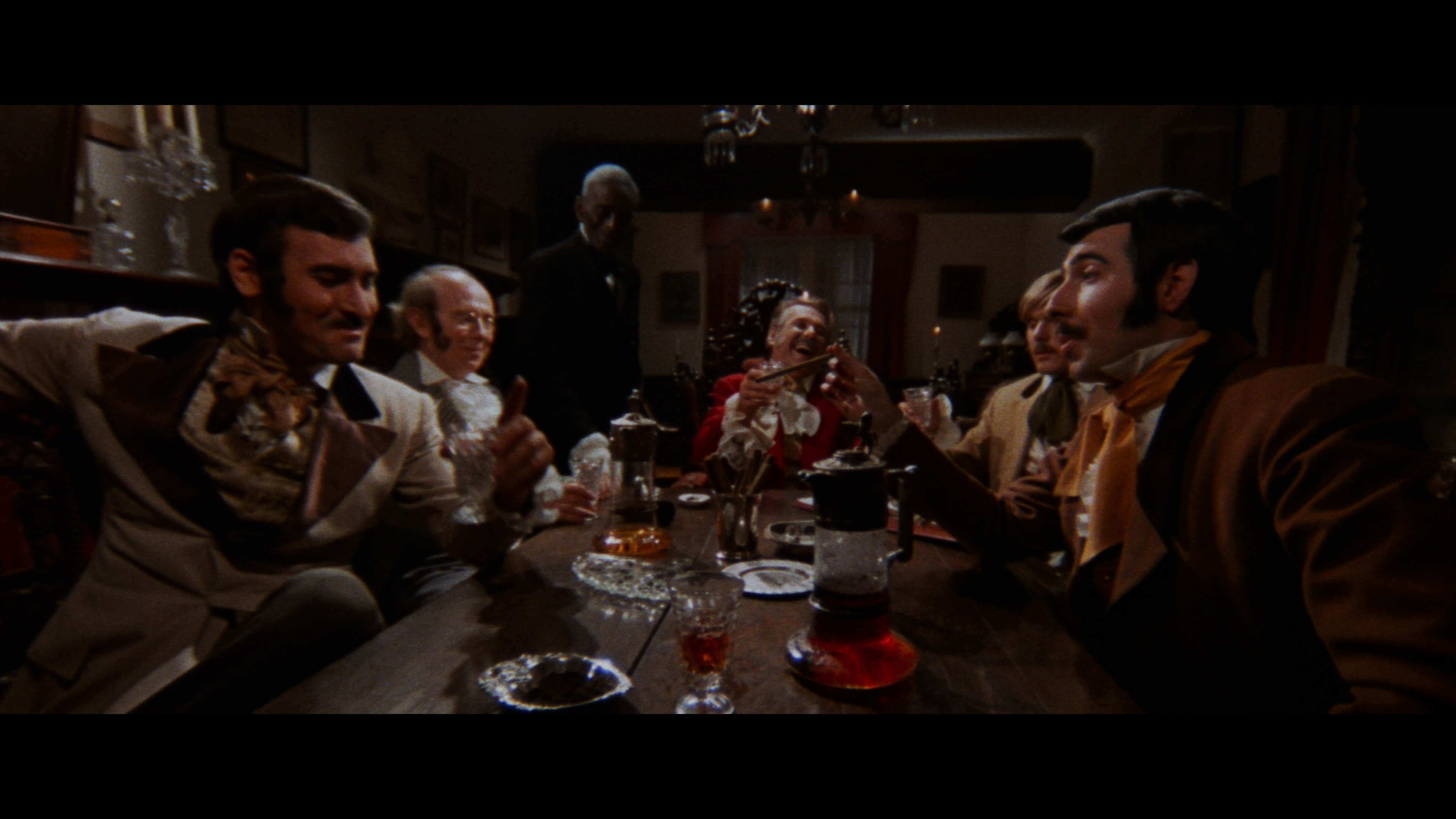 how its undeniably potent imagery later echoed, intentionally or not, in later films like Mandingo, Amistad, 12 Years a Slave, and Django Unchained.
how its undeniably potent imagery later echoed, intentionally or not, in later films like Mandingo, Amistad, 12 Years a Slave, and Django Unchained.
Released to U.S. theaters by Cannon (in its pre-Golan-Globus incarnation) in a third variant bearing an X rating and called Farewell Uncle Tom (shorter than the others but with 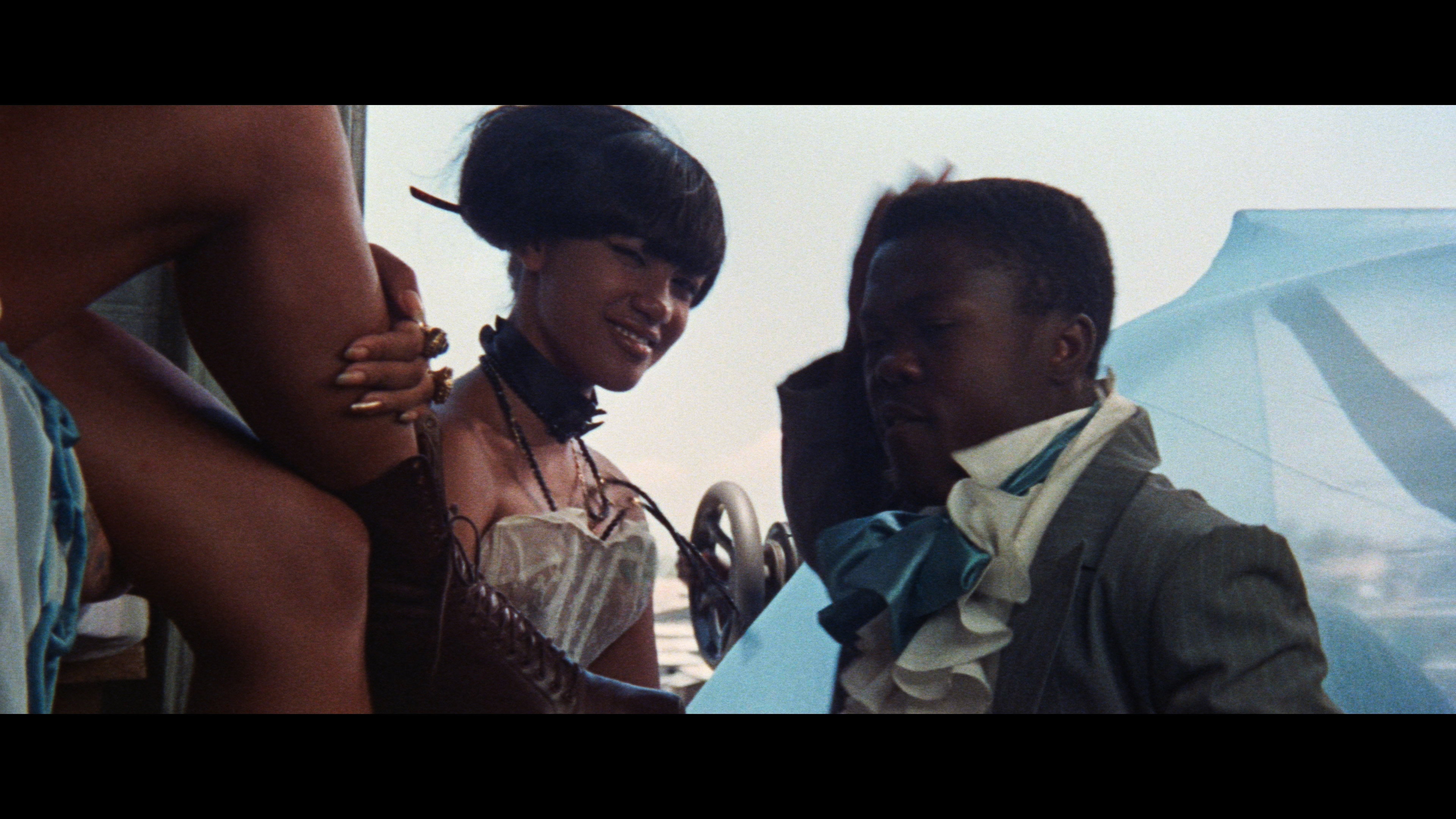 some exclusive outtake bits), Goodbye Uncle Tom mostly fell off the radar after that with little legit home video presence when VHS started taking off. The two-hour English version became quite a "you gotta see this to believe it" word-of-mouth title on the gray market circuit alongside other extreme Euro titles like Nekromantik and Emanuelle in America, and eventually Blue Underground stunned a lot of folks by providing the first official U.S. release in 2003 with two DVDs included as part of the essential The Mondo Cane Collection (also featuring Mondo Cane, Mondo Cane 2, Women of the World, and Africa Addio, plus David Gregory's excellent documentary, The Godfathers of Mondo -- but more on that below). The English-language version is included on one DVD, also featuring the trailer, assistant director and production manager Giampaolo Lomi's behind-the-scenes still gallery, and behind-the-scenes 8mm footage (49m47s) with Lomi commentary. The second DVD is devoted to the uncovered Italian director's cut (with no extras), which was a truly revelatory experience at the time; both versions feature solid transfers with the original scope framing intact.
some exclusive outtake bits), Goodbye Uncle Tom mostly fell off the radar after that with little legit home video presence when VHS started taking off. The two-hour English version became quite a "you gotta see this to believe it" word-of-mouth title on the gray market circuit alongside other extreme Euro titles like Nekromantik and Emanuelle in America, and eventually Blue Underground stunned a lot of folks by providing the first official U.S. release in 2003 with two DVDs included as part of the essential The Mondo Cane Collection (also featuring Mondo Cane, Mondo Cane 2, Women of the World, and Africa Addio, plus David Gregory's excellent documentary, The Godfathers of Mondo -- but more on that below). The English-language version is included on one DVD, also featuring the trailer, assistant director and production manager Giampaolo Lomi's behind-the-scenes still gallery, and behind-the-scenes 8mm footage (49m47s) with Lomi commentary. The second DVD is devoted to the uncovered Italian director's cut (with no extras), which was a truly revelatory experience at the time; both versions feature solid transfers with the original scope framing intact.
In 2024, Blue Underground revisited the film as a four-disc(!) edition in two choices, with the film itself spread across two UHDs or two Blu-rays -- plus a Blu-ray of bonus features and a 23-track soundtrack CD. The first disc is devoted to the usual English version along with the English trailer, featuring a crisp DTS-HD MA 2.0 English track with optional English SDH subtitles. Given that this is the first new scan of the film available in over two decades, it isn't too surprising that this is a major leap forward in detail and color rendition throughout with those insane wide-angle shots now looking incredible in the amount of little period details you 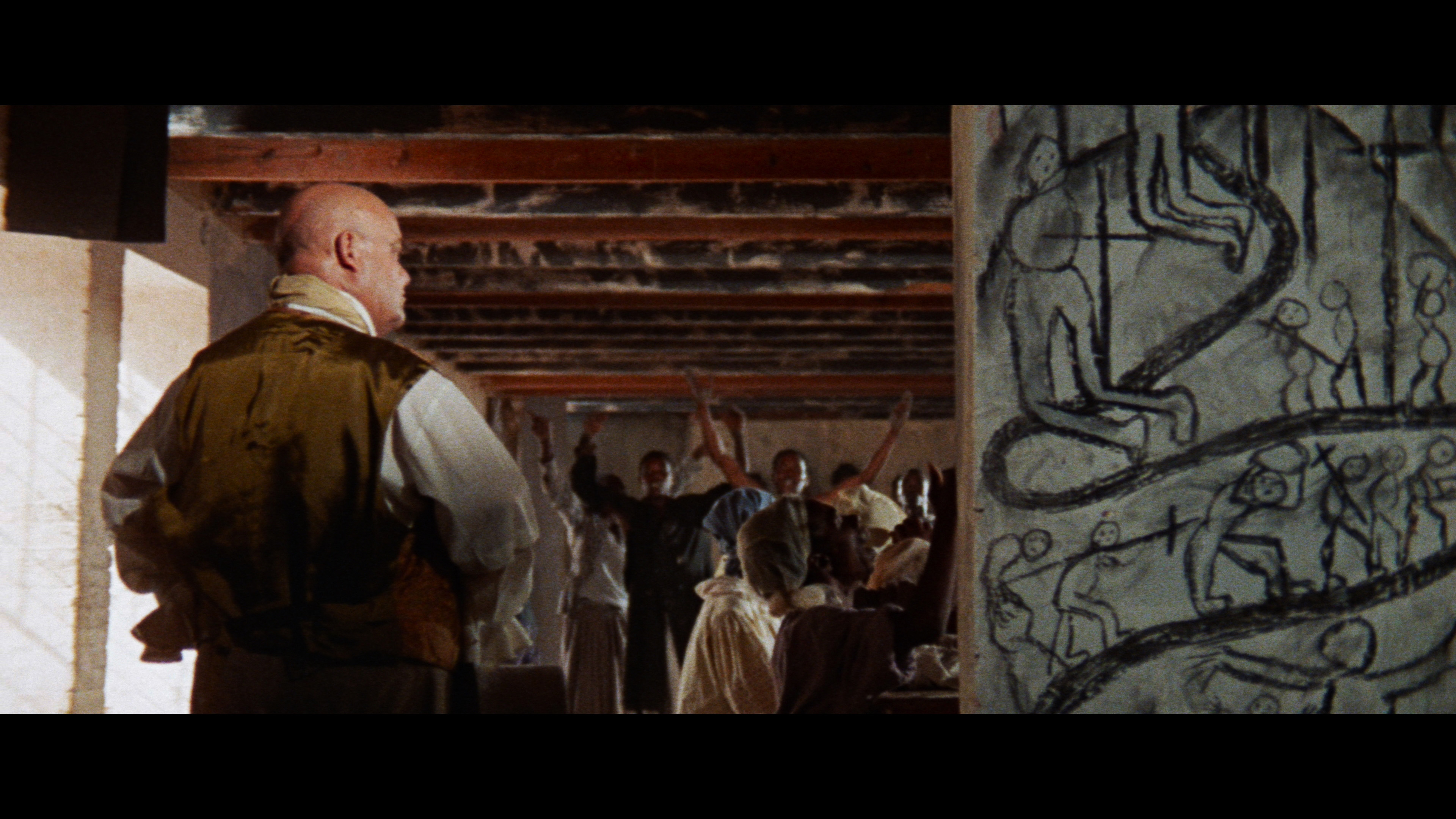 can make out now. The final sequence looks wild as well with those saturated blue Florida skies and gaudy
can make out now. The final sequence looks wild as well with those saturated blue Florida skies and gaudy 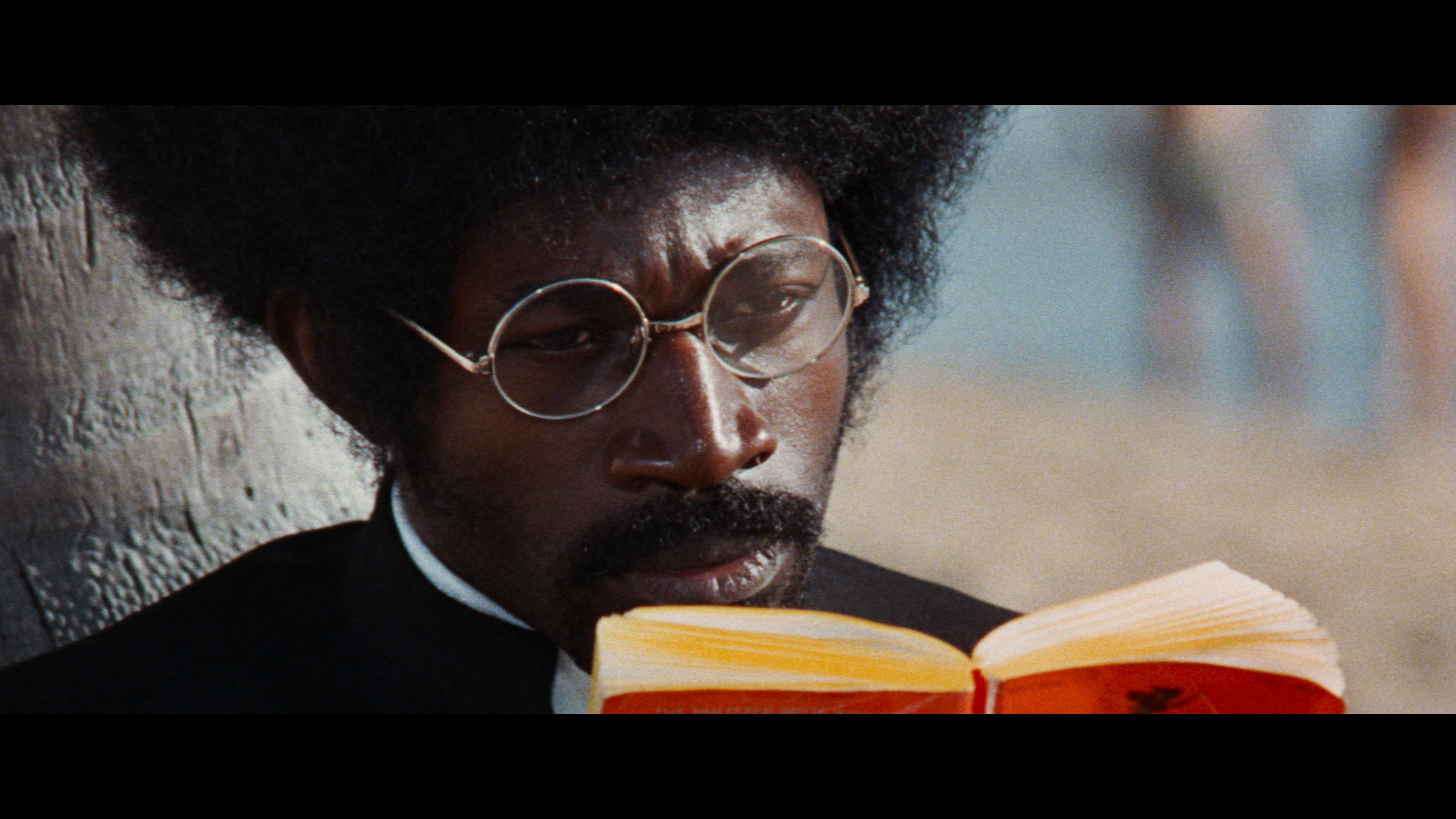 clothing choices really blazing off the screen. Disc two features an equally adept 4K restoration of the Italian version, plus the Italian trailer.
clothing choices really blazing off the screen. Disc two features an equally adept 4K restoration of the Italian version, plus the Italian trailer.
The third disc features the reappearance of The Godfathers of Mondo (89m10s), and it's still a wild ride with Jacopetti, Prosperi, and Ortolani among others providing frank, detailed accounts of how this whole cycle of films came about and what their intentions were, often wildly at odds with how critics were reading them at the time. Quite different but equally substantive is 2012's The Importance of Shocking: Gualtiero Jacopetti (L'importanza di esser scomodo) (93m59s), a documentary by Andrea Bettinetti focusing on the filmmaker's place within the Italian film industry, the jolting nature of the original mondo films and the imitators they spawned, and Jacopetti's own personality and artistic intentions that could be difficult to parse out sometimes. "Goodbye Cruel Mondo" (20m1s) from the earlier Blue Underground set features additional interview footage with the two directors and Ortolani, including plans to make a movie out of Mandingo and the process of filming select bits of Goodbye Uncle Tom in New Orleans and Miami. In "Mondo Mercenaries" (27m15s), author Mark Goodall examines the films' legacy upon their release versus their reception on home video, the recurring visual ideas running through the films, the iffiness of shooting in Haiti, and the volatile, complex nature of this film in particular. In "Abjection Under Authoritarianism" (19m47s), Professor Matthew J. Smith lambasts the film from the perspective of Haitian history and analyzes the film within the context of Duvalier's despotic and brutal rule. Also included are the 8mm behind-the-scenes reel and separate galleries for posters, advertising materials, the Japanese souvenir program, lobby cards, stills, video and soundtrack releases, and Lomi's production photos. The set also comes with a booklet featuring a new essay by Dan Madigan.
Reviewed on April 9, 2024



 prominence with their 1962 smash hit Mondo Cane and its Oscar-nominated theme song, filmmakers Gualtiero Jacopetti and Franco
prominence with their 1962 smash hit Mondo Cane and its Oscar-nominated theme song, filmmakers Gualtiero Jacopetti and Franco  Prosperi (and original collaborator Paolo Cavara) weathered a storm of controversy and critical attacks as they continued to push the format into riskier territory including the shocking Africa: Blood and Guts in 1966. However, the capper of their career -- at least in terms of both outrage and ambition -- came in 1971 with Goodbye Uncle Tom (Addio Zio Tom), a "documentary" shot in Haiti featuring hundreds of extras in harrowing reenactments of the brutal treatment of slaves on their way to and within the American South. The directors immediately claimed the film was made from an anti-racist perspective, something that was muddled when it was reworked considerably for its multiple English-language variants with almost all of the relevant political subtext and social commentary stripped away. The film's English-language run in the U.S. supposedly caused violent reactions among grindhouse audiences, and mainstream reviewers were quick to attack it as an affront to good taste and an incitement to race wars. Since then the film has taken its place among the most extreme offerings of Italian cinema along with titles like Cannibal Holocaust and Salò, or the 120 Days of Sodom, though its jaw-dropping epic visuals and outrageous racial politics make it unlike anything else out there. For better or worse.
Prosperi (and original collaborator Paolo Cavara) weathered a storm of controversy and critical attacks as they continued to push the format into riskier territory including the shocking Africa: Blood and Guts in 1966. However, the capper of their career -- at least in terms of both outrage and ambition -- came in 1971 with Goodbye Uncle Tom (Addio Zio Tom), a "documentary" shot in Haiti featuring hundreds of extras in harrowing reenactments of the brutal treatment of slaves on their way to and within the American South. The directors immediately claimed the film was made from an anti-racist perspective, something that was muddled when it was reworked considerably for its multiple English-language variants with almost all of the relevant political subtext and social commentary stripped away. The film's English-language run in the U.S. supposedly caused violent reactions among grindhouse audiences, and mainstream reviewers were quick to attack it as an affront to good taste and an incitement to race wars. Since then the film has taken its place among the most extreme offerings of Italian cinema along with titles like Cannibal Holocaust and Salò, or the 120 Days of Sodom, though its jaw-dropping epic visuals and outrageous racial politics make it unlike anything else out there. For better or worse. There's nothing resembling character development here as the film quickly turns into a dizzying account of the brutal daily machinations of the slave trade, showing the brutal conditions on ships with men forcibly brought to America in shackles, the degrading medical inspection process, the appraisals of newborn babies, and other harrowing depictions pulled from historical accounts, all portrayed on a massive, mind-boggling scale. In the final stretch we're thrust into modern-day Miami, where a modernized violent fantasia based on The
There's nothing resembling character development here as the film quickly turns into a dizzying account of the brutal daily machinations of the slave trade, showing the brutal conditions on ships with men forcibly brought to America in shackles, the degrading medical inspection process, the appraisals of newborn babies, and other harrowing depictions pulled from historical accounts, all portrayed on a massive, mind-boggling scale. In the final stretch we're thrust into modern-day Miami, where a modernized violent fantasia based on The  Confessions of Nat Turner plays out to demonstrate that the Civil War was hardly an end to an ongoing bloodstained legacy.
Confessions of Nat Turner plays out to demonstrate that the Civil War was hardly an end to an ongoing bloodstained legacy. how its undeniably potent imagery later echoed, intentionally or not, in later films like Mandingo, Amistad, 12 Years a Slave, and Django Unchained.
how its undeniably potent imagery later echoed, intentionally or not, in later films like Mandingo, Amistad, 12 Years a Slave, and Django Unchained. some exclusive outtake bits), Goodbye Uncle Tom mostly fell off the radar after that with little legit home video presence when VHS started taking off. The two-hour English version became quite a "you gotta see this to believe it" word-of-mouth title on the gray market circuit alongside other extreme Euro titles like Nekromantik and Emanuelle in America, and eventually Blue Underground stunned a lot of folks by providing the first official U.S. release in 2003 with two DVDs included as part of the essential The Mondo Cane Collection (also featuring Mondo Cane, Mondo Cane 2, Women of the World, and Africa Addio, plus David Gregory's excellent documentary, The Godfathers of Mondo -- but more on that below). The English-language version is included on one DVD, also featuring the trailer, assistant director and production manager Giampaolo Lomi's behind-the-scenes still gallery, and behind-the-scenes 8mm footage (49m47s) with Lomi commentary. The second DVD is devoted to the uncovered Italian director's cut (with no extras), which was a truly revelatory experience at the time; both versions feature solid transfers with the original scope framing intact.
some exclusive outtake bits), Goodbye Uncle Tom mostly fell off the radar after that with little legit home video presence when VHS started taking off. The two-hour English version became quite a "you gotta see this to believe it" word-of-mouth title on the gray market circuit alongside other extreme Euro titles like Nekromantik and Emanuelle in America, and eventually Blue Underground stunned a lot of folks by providing the first official U.S. release in 2003 with two DVDs included as part of the essential The Mondo Cane Collection (also featuring Mondo Cane, Mondo Cane 2, Women of the World, and Africa Addio, plus David Gregory's excellent documentary, The Godfathers of Mondo -- but more on that below). The English-language version is included on one DVD, also featuring the trailer, assistant director and production manager Giampaolo Lomi's behind-the-scenes still gallery, and behind-the-scenes 8mm footage (49m47s) with Lomi commentary. The second DVD is devoted to the uncovered Italian director's cut (with no extras), which was a truly revelatory experience at the time; both versions feature solid transfers with the original scope framing intact. can make out now. The final sequence looks wild as well with those saturated blue Florida skies and gaudy
can make out now. The final sequence looks wild as well with those saturated blue Florida skies and gaudy  clothing choices really blazing off the screen. Disc two features an equally adept 4K restoration of the Italian version, plus the Italian trailer.
clothing choices really blazing off the screen. Disc two features an equally adept 4K restoration of the Italian version, plus the Italian trailer.